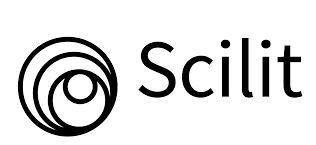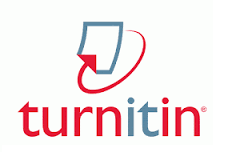Karakterisasi Adsorben dari Limbah Pelepah Kelapa Sawit Teraktivasi Natrium Hidroksida untuk Adsorpsi Mangan
DOI:
https://doi.org/10.32734/jtk.v14i1.17898Keywords:
heavy metal, manganese, adsorbent, adsorption, fixed-bed columnaAbstract
The use of heavy metals including manganese (Mn) in various industrial applications such as mining and metal processing has triggered water pollution and caused a negative impact on human health. This study aims to evaluate the adsorbent properties activated by sodium hydroxide from oil palm frond waste for Mn(II) adsorption from the water via a fixed-bed column at flow rates of 5, 10, and 15 mL/min. The morphology analysis exhibited high pore development in the adsorbent after the activation process using sodium hydroxide. Similar to the results of functional group analysis, the activated adsorbent indicated an increase in oxygen-containing functional groups that are beneficial aspects in the adsorption process. In the continuous adsorption applications, a flow rate of 5 mL/min presented an optimum adsorption capacity of 36.58 mg/g compared to flow rates of 10 mL/min and 15 mL/min: 28.94 mg/g and 22.07 mg/g, respectively. The findings of the present work denote the utility and effectiveness of oil palm frond waste as an eco-friendly raw material for the fabrication of adsorbent with relatively favorable properties for Mn(II) adsorption.
Downloads
References
S. Mishra, R.N. Bharagava, N. More, A. Yadav, S. Zainith, S. Mani, and P. Chowdhary, Heavy Metal Contamination: An Alarming Threat to Environment and Human Health, Environmental Biotechnology: For Sustainable Future, 2019.
M. Mariana, E. M. Mistar, D. Aswita, A. S. Zulkipli, and T. Alfatah, “Nipa palm shell as a sustainable precursor for synthesizing high-performance activated carbon: Characterization and application for Hg2+ adsorption,” Bioresour. Technol. Reports, vol. 21, p. 101329, 2023.
S. Dey, B. Tripathy, M. S. Kumar, and A. P. Das, “Ecotoxicological consequences of manganese mining pollutants and their biological remediation,” Environ. Chem. Ecotoxicol., vol. 5, pp. 55–61, 2023.
S. Mitra, A. J. Chakraborty, A. M. Tareq, T. B. Emran, F. Nainu, A. Khusro, A. M. Idris, M. U. Khandaker, H. Osman, F. A. Alhumaydhi, J. S. Gandara, “Impact of heavy metals on the environment and human health: Novel therapeutic insights to counter the toxicity,” J. King Saud Univ. - Sci., vol. 34, p. 101865, 2022..
V. A. Matveeva, A. V. Alekseenko, D. Karthe, and A. V. Puzanov, “Manganese Pollution in Mining-Influenced Rivers and Lakes: Current State and Forecast under Climate Change in the Russian Arctic,” Water, vol. 14, p. 1091, 2022.
M. Mariana, E. M. Mistar, M. Syabriyana, A. S. Zulkipli, D. Aswita, and T. Alfatah, “Properties and adsorptive performance of candlenut shell and its porous charcoals for aqueous mercury(II) removal,” Bioresour. Technol. Reports, vol. 19, p. 101182, 2022.
E. M. Mistar, T. Alfatah, and M. D. Supardan, “Synthesis and characterization of activated carbon from Bambusa vulgaris striata using two-step KOH activation,” J. Mater. Res. Technol., vol. 9, pp. 6278–6286, 2020.
M. Bilal, I. Ihsanullah, M. Younas, and M. Ul Hassan Shah, “Recent advances in applications of low-cost adsorbents for the removal of heavy metals from water: A critical review,” Sep. Purif. Technol., vol. 278, p. 119510, 2021.
P. González-García, “Activated carbon from lignocellulosics precursors: A review of the synthesis methods, characterization techniques and applications,” Renew. Sustain. Energy Rev., vol. 82, pp. 1393–1414, 2018.
T. Alfatah, E. M. Mistar, M. Syabriyana, and M. D. Supardan, “Advances in oil palm shell fibre reinforced thermoplastic and thermoset polymer composites,” Alexandria Eng. J., vol. 61, pp. 4945–4962, 2022.
B. Haryanto, W. K. Sinaga, and F. T. Saragih, “Kajian Model Interaksi pada Adsorpsi Logam Berat Kadmium (Cd2+) dengan Menggunakan Adsorben dari Pasir Hitam,” J. Tek. Kim. USU, vol. 8, pp. 79–84, 2019.
D. S. Bath, J. M. Siregar, and M. T. Lubis, “Penggunaan tanah bentonit sebagai adsorben logam Cu,” J. Tek. Kim. USU, vol. 1, pp. 1–4, 2012.
A. Rizki, E. Syahputra, S. Pandia, and Halimatuddahliana, “Pengaruh waktu kontak dan massa adsorben biji asam jawa (tamarindus indica) dengan aktivator H3PO4 terhadap kapasitas adsorpsi zat warna methylene blue,” J. Tek. Kim. USU, vol. 8, pp. 54–60, 2019.
F. Hanum, R. J. Gultom, and M. Simanjuntak, “Adsorpsi zat warna metilen biru dengan karbon aktif dari kulit durian menggunakan koh dan naoh sebagai aktivator,” J. Tek. Kim. USU, vol. 6, pp. 49–55, 2017.
N. Z. J. Zakaria, S. Rozali, N. M. Mubarak, and S. Ibrahim, “A review of the recent trend in the synthesis of carbon nanomaterials derived from oil palm by-product materials,” Biomass Convers. Biorefinery, vol. 14, pp. 13–44, 2022.
S. Lv, X. Ma, Q. Fu, Y. Zheng, and Z. Ma, “Removal of hexamethyldisiloxane by NaOH–activated porous carbons produced from coconut shells,” Catalysts, vol. 13, p. 918, 2023.
E. M. Mistar, S. Ahmad, A. Muslim, T. Alfatah, and M. D. Supardan, “Preparation and characterization of a high surface area of activated carbon from Bambusa vulgaris—Effect of NaOH activation and pyrolysis temperature,” in IOP Conference Series: Materials Science and Engineering, 2018, vol. 334, no. 1.
Y. Yu, N. Qiao, D. Wang, Q. Zhu, F. Fu, R. Cao, R. Wang, W. Liu, B. Xu, “Fluffy honeycomb-like activated carbon from popcorn with high surface area and well-developed porosity for ultra-high efficiency adsorption of organic dyes,” Bioresour. Technol., vol. 285, p. 121340, 2019.
D. W. Kim, J. H. Wee, C. M. Yang, and K. S. Yang, “Efficient removals of Hg and Cd in aqueous solution through NaOH-modified activated carbon fiber,” Chem. Eng. J., vol. 392, p. 123768, 2020.
E. M. Chatir, A. El Hadrami, S. Ojala, and R. Brahmi, “Production of activated carbon with tunable porosity and surface chemistry via chemical activation of hydrochar with phosphoric acid under oxidizing atmosphere,” Surfaces and Interfaces, vol. 30, p. 101849, 2022.
T. Alfatah, E. M. Mistar, and M. D. Supardan, “Porous structure and adsorptive properties of activated carbon derived from Bambusa vulgaris striata by two-stage KOH/NaOH mixture activation for Hg2+ removal,” J. Water Process Eng., vol. 43, p. 102294, 2021.
E. M. Mistar, I. Hasmita, T. Alfatah, A. Muslim, and M. D. Supardan, “Adsorption of mercury(II) using activated carbon produced from bambusa vulgaris var. Striata in a fixed-bed column,” Sains Malaysiana, vol. 48, pp. 719–725, 2019.
A. M. Elewa, A. A. Amer, M. F. Attallah, H. A. Gad, Z. A. M. Al-Ahmed, and I. A. Ahmed, “Chemically Activated Carbon Based on Biomass for Adsorption of Fe(III) and Mn(II) Ions from Aqueous Solution,” Materials, vol. 16, p. 1251, 2023.
D. K. Mondal, B. K. Nandi, and M. K. Purkait, “Removal of mercury (II) from aqueous solution using bamboo leaf powder: Equilibrium, thermodynamic and kinetic studies,” J. Environ. Chem. Eng., vol. 1, pp. 891–898, 2013.
Downloads
Published
Issue
Section
License
Copyright (c) 2025 Jurnal Teknik Kimia USU

This work is licensed under a Creative Commons Attribution-ShareAlike 4.0 International License.

















